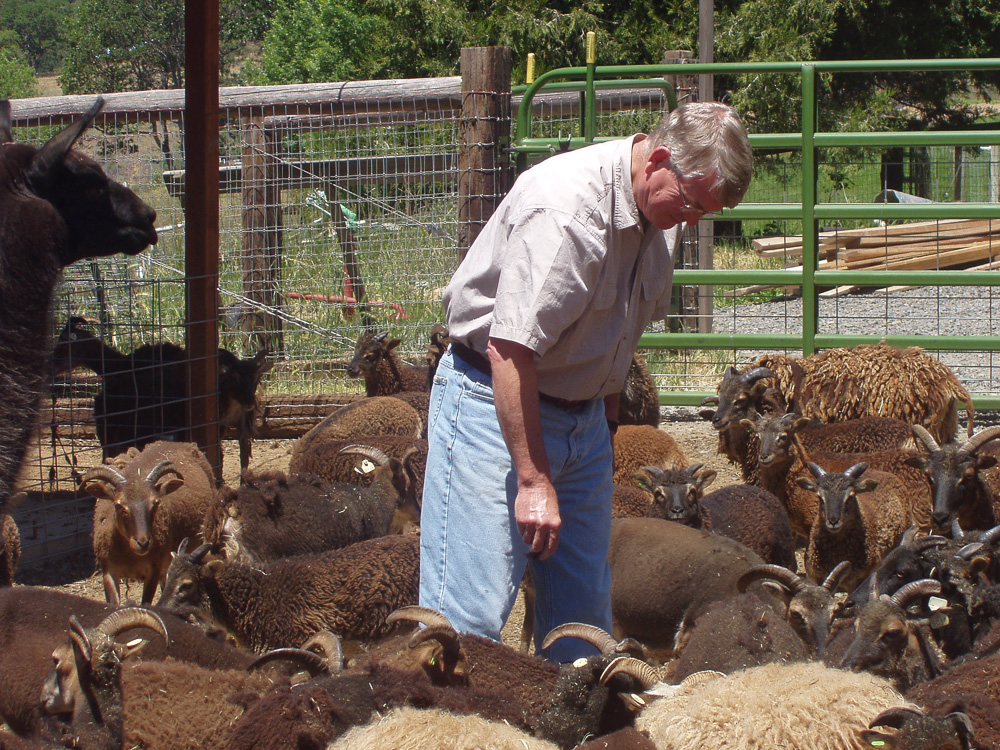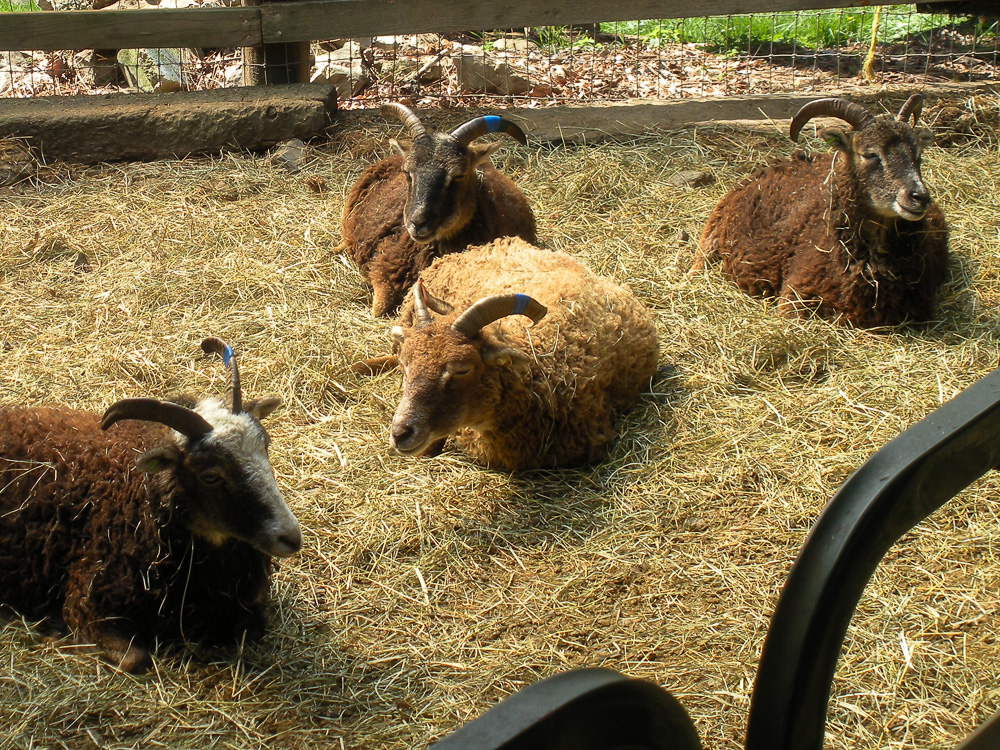As January brightens into February, the lengthening of the days is first apparent in the afternoons, both to you and to your Soay sheep. One evening you notice that you are managing to get chores done (and they notice that they have been fed) before it gets really dark. Your ewes have been quietly gestating, the rams having been packed off some time ago. And even though the earliest lambs are six weeks out, lambing season has already arrived. It is time for the preliminaries.
Feed
First indications of pregnancy
For the first four months, ewes do not show
much evidence of their pregnancies, and do not need any increase in their feed. But now,
as they begin to round out, be on the lookout for signs that their bodies are telling them
that they need to eat more. One thing
 to watch for is whether they are doing a better job of cleaning out the feeders, consuming
more of the stemmy, less-desirable hay. Another is an increase in their eagerness at chow
time, with more pushing, shoving and crowding. We have known ordinarily dignified,
well-settled ladies to leap – all four feet off the ground! – and shimmy with
anticipation at the sight of the hay man approaching.
to watch for is whether they are doing a better job of cleaning out the feeders, consuming
more of the stemmy, less-desirable hay. Another is an increase in their eagerness at chow
time, with more pushing, shoving and crowding. We have known ordinarily dignified,
well-settled ladies to leap – all four feet off the ground! – and shimmy with
anticipation at the sight of the hay man approaching.
Slowly ramp up nutrition
We gradually increase the amount of hay we offer, paying close attention to how much they waste and how well they clean up the feeders. We do not want to waste pricey hay but we do want to provide adequate nutrition for our pregnant ewes. At one point, we would also begin to offer small amounts of "ewe-lamb ration." This is an alfalfa-based pelleted feed supplement that we can get from our feed store. Something similar is probably available in your area.
For the last three years, however, we have supplemented with alfalfa hay instead, starting at a ratio of 1 part alfalfa to 10 parts grass hay. For us, this turns out to be less expensive. If you choose to feed alfalfa, be aware that the grade of alfalfa makes a big difference. It is a waste of money to buy alfalfa that is coarse and stemmy; Soay sheep simply can't handle it and it will end up on the ground. Leafy third cutting alfalfa costs more but will not be wasted. At this point we are less concerned with the additional nutrition the ewes receive than we are with making sure their rumens are gradually accustomed to the supplement by the time we need to ramp up their nutrition in response to their lambs' demand for more and more milk.
Body Condition
Try to get a feel for your sheep
It is a good idea to keep tabs on the ewes'
body condition, not because they are likely to be losing weight now, but so you will be in
a better position to assess their condition later, when they are lactating heavily, and
when they are prone to losing body mass. You need to get a feel for your
girls, literally, to learn through your fingers how a healthy, well-fed ewe feels,
particularly your healthy, well-fed ewes. If they will allow it, you can move
quietly behind them as they are lined up at the trough and feel the top of the loin just
 ahead of the pelvis. If this makes them uneasy and causes them to move away, find an
excuse to lure them quietly into a confined area so that you can move among them slowly
and gently. You may have to work up to this gradually, but it is worth the effort so that
you can stay on familiar terms with your girls and so they will not shy from your
touch.
ahead of the pelvis. If this makes them uneasy and causes them to move away, find an
excuse to lure them quietly into a confined area so that you can move among them slowly
and gently. You may have to work up to this gradually, but it is worth the effort so that
you can stay on familiar terms with your girls and so they will not shy from your
touch.
What to feel for
How thick is the meat and padding in the loin area? How much do the spinal processes protrude on top and to the sides? Here, the idea is for your fingers to sense the amount of fleshiness versus boniness, the loin area being the traditional place where this is judged. You can also feel the ribs to assess the amount of fat coverage.
Soay sheep are naturally lean
Though you can find diagrams on the web showing how to judge the condition of a sheep, those pictures are of commercial meat sheep, not Soay sheep. You can get an idea of what you are feeling for from these sites, but don't worry about the details. A Soay sheep is a much leaner creature than a Suffolk or other meat breed, and even the fittest Soay ewe is a bag of bones by meat sheep standards. The important thing is to know your own flock, and to be able to monitor any changes in their condition. Compare the feel of your different ewes, and pay attention to the thinner ones. As mentioned above, the biggest danger of under-nutrition is not now, in late gestation, but a month after lambing, when the demands of milk production are so great that many ewes begin to lose muscle mass, because they simply cannot eat enough hay to keep up. The problem is more acute with twin lambs. Now, before lambing, is the time to measure baseline body condition of your ewe flock with your own fingers.

